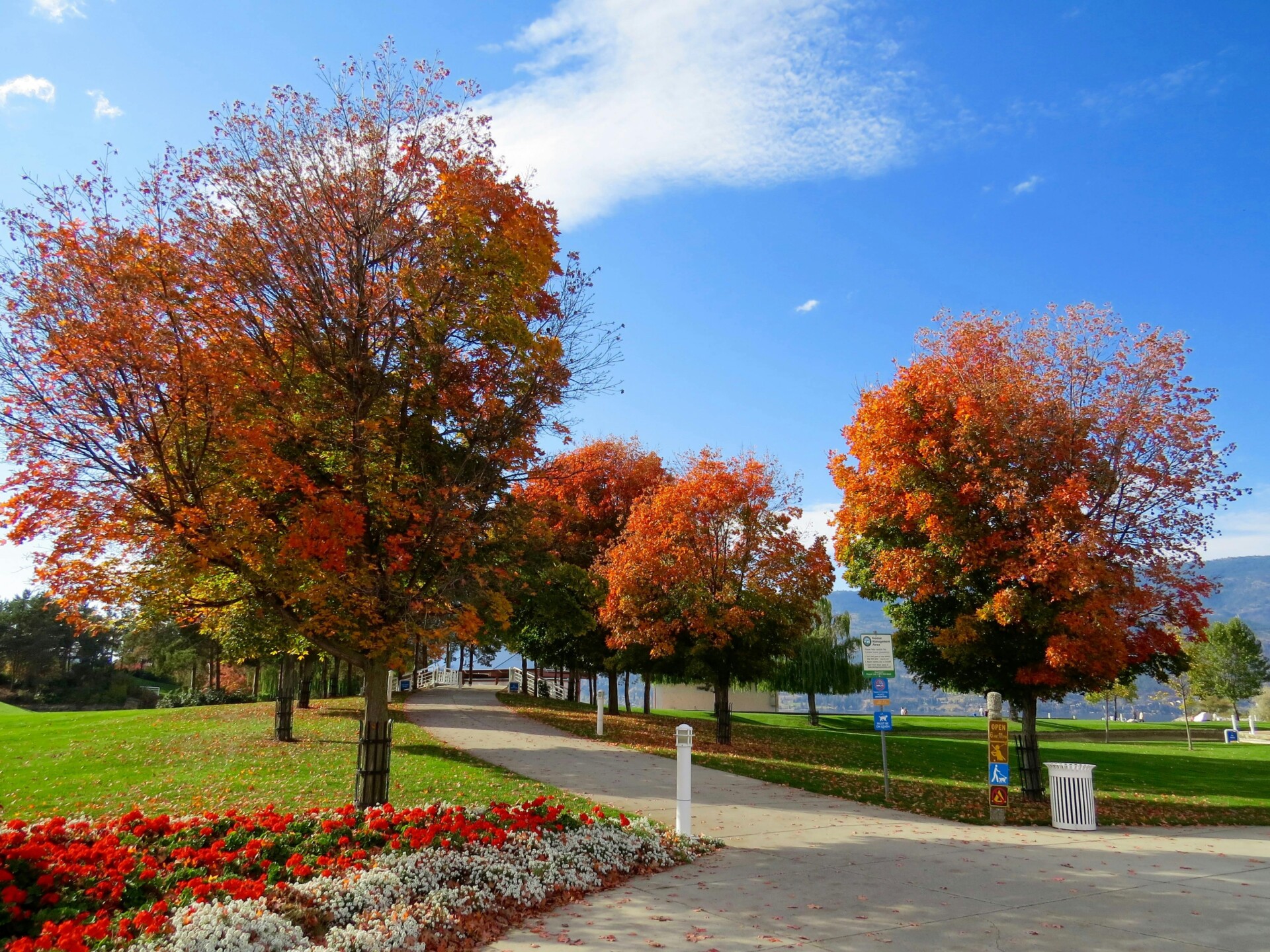Using water-efficient landscaping for your commercial property is not only an environmentally responsible choice, but it can also help you save money in the long run. This approach focuses on using plants and techniques that require less water, reducing your water bills and commercial garden maintenance costs.
By integrating water-efficient landscaping practices, you can create a sustainable and attractive environment that supports ecological balance and resource conservation.
Whether you are dealing with large green spaces or smaller garden areas, planning and designing for water efficiency can make a huge difference.
Simple steps like replacing thirsty plants with drought-tolerant varieties, such as succulents and native species, greatly reduce the need for frequent watering. Ensuring your irrigation system is working properly and applying water evenly can help avoid wastage and promote healthier plant growth.
Mulching is another effective way to conserve water, as it helps retain soil moisture and deter weed growth, which competes with your plants for water.
Paying attention to the landscape’s design, especially on slopes and specific zones, also enhances water efficiency. Adopting these practices can help you maintain lush, green outdoor spaces while cutting down on water use and operational costs.
Principles of Water-Efficient Landscaping
Water-efficient landscaping not only helps conserve water but also reduces costs and maintenance efforts in commercial settings. Key principles include understanding how to use water wisely and applying sustainable design practices.
Understanding Water Efficiency
Water efficiency is crucial for sustainable landscaping. This involves knowing how much water different plants need and ensuring that this water is used effectively.
Irrigation systems should be tailored to deliver the right amount directly to the root zones, minimising waste. Regularly inspect these systems for leaks and ensure they are properly maintained.
Plants native to your region are well-adapted to local conditions and often require less water. Group plants with similar water needs together to optimise irrigation. The use of mulch helps retain soil moisture and reduces evaporation.
Key Concepts of Sustainable Design
Sustainable landscape design combines functionality with environmental responsibility. A well-planned layout meets the needs of users while conserving water. Xeriscaping, which uses low-water plants and minimises lawn areas, is a fundamental concept. This reduces dependency on regular watering and maintenance.
Smart controllers and sensors in irrigation systems can help adjust watering schedules based on weather conditions, further improving water use efficiency. Hardscape elements like paths and patios should be designed to allow rainwater to soak into the ground, recharging local aquifers and reducing runoff.
Irrigation Management and Technology
Efficient irrigation systems play a key role in reducing water consumption and maintaining healthy landscapes. Smart irrigation and drip irrigation systems are two effective methods that can help save water and reduce costs in commercial maintenance.
Smart Irrigation
Smart irrigation systems use advanced technology to manage water use efficiently. These systems often include weather-based controllers and soil moisture sensors.
Weather-based controllers adjust watering schedules based on local weather conditions. For instance, if it rains, the system will skip or reduce the watering cycle, ensuring no water is wasted.
Soil moisture sensors measure the moisture level in the soil and only water plants when necessary. This prevents overwatering and helps maintain soil health. Smart irrigation systems can significantly reduce water use and lower costs by preventing water waste.
Drip Irrigation Systems
Drip irrigation systems deliver water directly to the roots of plants. This method is highly efficient because it minimises evaporation and runoff.
Drip systems use a network of tubes and emitters to release small amounts of water slowly. This ensures that water seeps deep into the soil where it is needed most.
Drip irrigation is ideal for areas with drought conditions because it focuses on water conservation. It allows you to maintain a healthy landscape while significantly reducing water consumption.
These systems are suitable for various types of plants, including shrubs, trees, and ground covers, making them versatile for commercial landscapes.
Soil and Mulch Strategy
Implementing the right soil and mulch strategies can greatly improve water efficiency and promote healthy landscapes. These techniques focus on enriching the soil with organic matter and using mulching to conserve moisture.
The Role of Organic Matter
Organic matter is crucial for soil health. Adding compost or decomposed plant material helps improve soil structure and increases its water-holding capacity. When incorporated into the topsoil, organic matter enhances aeration and allows roots to grow deeper. This deeper root growth leads to better nutrient absorption and stronger, healthier plants.
Benefits of Organic Matter:
- Improves soil structure: Makes the soil crumblier and easier to work with.
- Increases water retention: Helps the soil hold more water.
- Boosts soil fertility: Provides essential nutrients for plants.
Mulching Techniques
Mulching involves spreading a layer of material on the soil surface to conserve moisture, reduce evaporation, and improve soil health. Organic mulches, like wood chips and straw, gradually decompose, adding nutrients back into the soil. Plastic mulch, though not organic, is also effective for moisture conservation and temperature regulation.
Types of Mulch:
- Organic Mulch: Wood chips, leaves, compost, and straw.
- Plastic Mulch: Used in areas where consistent moisture is critical.
Application Tips:
- Thickness: Apply a layer 5-10 centimetres thick.
- Coverage: Ensure it covers all soil around plants, but keep it away from stems to prevent rot.
- Renewal: Refresh organic mulch annually as it decomposes.
Using these techniques helps maintain soil moisture, reduces the need for frequent watering, and promotes a healthier, more sustainable landscape.
Plant Selection and Placement
Selecting and placing the right plants is vital for water-efficient landscaping. Choosing drought-tolerant species and effective grouping can significantly reduce water use and garden maintenance costs.
Choosing Drought-Tolerant Species
When thinking about reducing water use, look for drought-tolerant plants. Native species are often a good choice because they are adapted to the local climate and soil conditions, needing less water and care.
Effective options include:
- Succulents: These store water in their leaves, making them ideal for dry conditions.
- Ornamental grasses: They require minimal water once established and add texture to the landscape.
- Hardy shrubs: Look for shrubs with small, hairy, or light-coloured leaves, which reduce water loss.
A mix of these can create a resilient and attractive landscape that thrives with minimal water.
Effective Grouping and Zoning
Grouping plants by their water needs, also known as zoning, helps in the efficient use of water. By planting drought-tolerant plants together and thirstier plants in separate areas, you can tailor the irrigation methods more effectively.
Key considerations include:
- Hydrozoning: Create zones based on how much water each plant needs.
- Microclimates: Use shaded areas for plants needing less sunlight and cooler spots for high-water plants.
- Mulching: Use mulch around plants to retain moisture and reduce evaporation.
With careful planning, you can ensure that each plant group receives the right amount of water, which saves water and reduces maintenance.
Innovative Water Conservation Practices
Incorporating innovative water conservation practices can significantly reduce your water bills and improve the sustainability of your landscaping. Utilising rainwater harvesting and employing permeable materials can make your maintenance efforts both cost-effective and eco-friendly.
Rainwater Harvesting and Utilisation
Rainwater harvesting involves collecting and storing rainwater for landscape irrigation and other purposes. Installing rain barrels or larger cisterns allows you to capture rain from rooftops, reducing reliance on municipal water.
Benefits:
- Cost savings: Using harvested rainwater lowers your water bills.
- Sustainability: Reduces demand on local water supplies.
- Flexibility: Stored water can be used during dry periods.
Implementation Tips:
- Gutter Systems: Ensure proper installation to direct rainwater efficiently.
- Storage Units: Choose the right size and type based on your needs.
- Filtration: Install filters to remove debris and contaminants.
Leveraging Hardscapes and Permeable Materials
Using permeable materials in hardscapes allows rainwater to seep through surfaces, reducing runoff and improving water management. Materials like porous pavers and gravel can help to absorb rainwater, replenishing groundwater supplies.
Benefits:
- Environmental Impact: Reduces runoff and erosion.
- Water Conservation: Enhances groundwater recharge.
- Maintenance: Often requires less maintenance compared to conventional materials.
Implementation Tips:
- Material Selection: Opt for materials that balance durability and permeability.
- Layout: Design pathways and patios with proper slope direction.
- Combination: Integrate permeable and non-permeable materials for functionality and aesthetics.
Maintenance and Monitoring for Efficiency
Ensuring your commercial landscape is water-efficient not only preserves valuable resources but also reduces long-term costs. Effective maintenance and monitoring are key to achieving these benefits.
Routine Landscape Maintenance
Regular garden maintenance is vital for keeping a commercial landscape water-efficient. Routine tasks like pruning, weeding, and mulching help maintain plant health. Pruning removes dead or excess growth, allowing plants to focus their energy on vital parts. Weeding eliminates competition for water and nutrients. Mulching conserves soil moisture and reduces water needs.
Using fertilisers sparingly can minimise run-off, which often wastes water. Choose drought-resistant plants that require less watering and maintenance. Regularly inspect irrigation systems for leaks or inefficiencies. A well-maintained system prevents water waste and ensures plants receive consistent hydration, reducing overall water use and costs.
Integrating Control Systems for Monitoring
Advanced control systems can optimise water use in commercial landscapes. Smart irrigation controllers adjust watering schedules based on weather conditions and soil moisture levels, minimising water waste by delivering the right amount of water when needed.
Monitoring systems can detect issues early, such as leaks or malfunctions in irrigation equipment. Early detection allows for swift repairs, preventing water loss and avoiding damage to your landscape. Implementing these technologies can greatly enhance the efficiency of your irrigation practices.
Smart sensors and automated systems not only save water but also reduce maintenance costs. By keeping a close eye on water usage and system performance, you can ensure your commercial property remains both beautiful and resource-efficient.
Frequently Asked Questions
Water-efficient landscaping in commercial spaces can greatly reduce resource use and maintenance costs. The following sections answer common questions about energy efficiency, irrigation, and choosing the right plants and techniques for conserving water.
How can landscaping improve energy efficiency in commercial settings?
Strategic placement of trees and shrubs can provide shade, reducing the need for air conditioning in buildings. Using plants to form windbreaks can also help lower heating costs in the cooler months.
What are the best practices for efficient irrigation to conserve water?
Implementing an efficient irrigation system is crucial. Consider drip irrigation or soaker hoses to minimise evaporation. Watering early in the morning when temperatures are cooler can also reduce water loss.
What steps can be taken to increase water efficiency in a commercial garden?
Select native plants that are adapted to the local climate. Use water-saving mulches to retain soil moisture. Regularly check and maintain irrigation systems to ensure they are working efficiently.
How can drought-tolerant plants contribute to water-efficient landscaping?
Drought-tolerant plants require less water to thrive. They are often well-suited to the local climate and can survive on natural rainfall, reducing the need for supplemental watering.
What is the impact of mulching on water conservation in landscaping?
Mulching helps to retain soil moisture, suppress weeds, and regulate soil temperature. Organic mulches like wood chips or bark break down over time, adding nutrients to the soil.
In what ways can smart landscaping design reduce the need for watering?
Designing landscapes with water zones groups plants with similar water needs together. This allows for more efficient irrigation. Incorporating rain gardens and swales can capture and utilise rainwater effectively.
In conclusion, implementing water-efficient landscaping is a smart move for cutting costs in commercial maintenance.
Externals Landscape Services is dedicated to providing sustainable and cost-effective solutions tailored to your commercial property. With our expertise, you can achieve a beautiful, eco-friendly landscape while significantly reducing water usage and maintenance expenses. Visit our website to learn more about how we can help you save resources and optimize your landscape maintenance.

